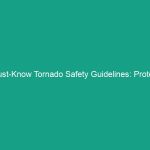Introduction
As the world shifts towards sustainable energy sources, the clean energy sector is rapidly evolving. However, with this growth comes a myriad of Health, Safety, and Environment (HSE) challenges that professionals must navigate. Ensuring Safety in Clean Energy Work is not merely a regulatory requirement but a fundamental aspect of fostering a culture of Safety and wellbeing in the workplace. This article delves into the critical risks associated with clean energy work, the importance of HSE practices, and the best strategies to mitigate potential Hazards.
Understanding Regulatory Frameworks in Clean Energy
In the clean energy sector, compliance with regulatory frameworks is essential for ensuring Safety and minimizing risks. These Regulations outline the safety Standards that organizations must adhere to while operating in this dynamic environment. Various bodies, such as the Occupational Safety and Health Administration (OSHA) in the United States and equivalent organizations worldwide, provide guidelines that address the specific Hazards found in clean energy operations.
Key Regulatory Bodies
Several key organizations govern safety standards in clean energy work:
- Occupational Safety and Health Administration (osha): OSHA sets and enforces protective Workplace Safety and health standards.
- Environmental Protection Agency (EPA): The EPA oversees regulations that protect the environment and public health from potential hazards.
- International Organization for Standardization (ISO): ISO provides frameworks and guidelines for safety management systems, including ISO 45001 for Occupational Health and safety.
Importance of Compliance
Compliance with these regulations is crucial for several reasons. Firstly, it helps organizations avoid legal repercussions and potential fines. Secondly, adhering to safety standards significantly reduces the risk of workplace accidents and injuries. Finally, demonstrating a commitment to safety can enhance an organization’s reputation and foster trust among stakeholders.
Identifying Common Risks in Clean Energy Work
Understanding the potential hazards in clean energy work is essential for implementing effective Safety Measures. The clean energy sector presents unique challenges, including exposure to Electrical Hazards, working at heights, and operating heavy machinery. Recognizing these risks is the first step in developing comprehensive safety protocols.
Electrical Hazards
Electrical hazards are a significant concern in clean energy work, particularly in solar and wind energy installations. Workers may face risks such as electrocution, arc flashes, and electrical Burns. It is vital to ensure that all electrical systems are properly installed and maintained, and workers are trained to recognize and mitigate these dangers.
Working at Heights
Many clean energy jobs, especially in wind energy, require employees to work at significant heights. This introduces risks such as falls, which can lead to severe injuries or fatalities. Implementing Safety Measures, including the use of harnesses, guardrails, and Fall Protection systems, is critical to safeguard workers.
Heavy Machinery Operation
In the installation and Maintenance of renewable energy systems, workers often operate heavy machinery. This can lead to accidents if proper safety protocols are not followed. Training workers in the safe operation of machinery and conducting regular safety inspections can significantly reduce these risks.
Best Practices for Ensuring Safety in Clean Energy Work
Implementing Best Practices is essential for maintaining a safe work environment in the clean energy sector. These practices not only help to comply with regulations but also promote a culture of safety among employees.
Regular Training and Education
Investing in continuous training and education for employees is one of the most effective strategies for ensuring Safety in Clean Energy Work. Regular safety training sessions should cover topics such as hazard recognition, emergency response Procedures, and the proper use of Personal Protective Equipment (PPE).
Conducting Risk Assessments
Regular risk assessments are crucial for identifying potential hazards in the workplace. By systematically evaluating risks, organizations can implement appropriate Control Measures to minimize exposure. Risk assessments should be updated frequently, particularly when new equipment or processes are introduced.
Encouraging Open Communication
Fostering an environment where employees feel comfortable reporting safety concerns can significantly enhance Workplace Safety. Open communication channels allow workers to voice their concerns and suggest improvements, leading to a more proactive approach to safety.
Case Studies: Lessons Learned from Clean Energy Incidents
Examining real-world incidents in the clean energy sector can provide valuable lessons for improving safety practices. These case studies highlight the importance of adherence to safety protocols and the consequences of neglecting HSE standards.
Case Study 1: Solar Panel Installation Accident
In a notable incident at a solar panel installation site, a worker fell from a roof while installing panels. The investigation revealed that the company had not provided adequate fall protection training, and safety harnesses were not utilized. Following this incident, the organization implemented stricter training requirements and improved fall protection measures, resulting in a significant decrease in similar accidents.
Case Study 2: Wind Turbine Maintenance Accident
Another incident involved a maintenance worker who suffered severe injuries while servicing a wind turbine. The investigation found that proper lockout/tagout procedures were not followed, leading to an unexpected machine startup. In response, the company revised its maintenance protocols and introduced mandatory lockout/tagout training for all maintenance personnel, significantly enhancing safety during maintenance operations.
Challenges in Maintaining Safety in Clean Energy Work
While the clean energy sector has made significant strides in improving safety, several challenges remain. Understanding these challenges is essential for developing effective strategies to address them.
Rapid Technological Advancements
The clean energy industry is characterized by rapid technological advancements, which can pose challenges for safety training and compliance. As new technologies are adopted, workers must be adequately trained to operate and maintain them safely. Organizations must prioritize ongoing education to keep pace with these changes.
Workforce Diversity and Training Gaps
The clean energy workforce is often diverse, consisting of individuals with varying levels of experience and training. This diversity can lead to gaps in safety knowledge and practices. Organizations should ensure that all employees, regardless of their background, receive comprehensive safety training tailored to their specific roles.
Remote Work Locations
Many clean energy projects take place in remote locations, making it challenging to provide adequate supervision and emergency response capabilities. Companies must develop robust safety protocols that account for these challenges, including regular safety audits and contingency plans for emergencies.
Future Trends in Clean Energy Safety
As the clean energy sector continues to evolve, several trends are shaping the future of safety in the industry. Staying informed about these trends can help organizations proactively address emerging risks and improve safety practices.
Increased Use of Technology
Advancements in technology, such as drones and wearable devices, are becoming increasingly prevalent in the clean energy sector. Drones can be used for inspections, reducing the need for workers to operate at heights. Wearable devices can monitor workers’ health and safety, providing real-time data to prevent accidents.
Focus on Mental Health and Wellbeing
The importance of mental health and wellbeing in the workplace is gaining recognition in the clean energy sector. Organizations are beginning to implement wellness programs that address stress management, mental health support, and work-life balance, recognizing that a healthy workforce is crucial for overall safety.
Enhanced Regulatory Scrutiny
As the clean energy sector grows, regulatory bodies are likely to increase scrutiny of safety practices. Organizations must remain vigilant in compliance with evolving regulations and proactively implement safety measures to meet these standards.
Conclusion
Ensuring Safety in Clean Energy Work is a collective responsibility that requires a proactive approach from all stakeholders. By understanding regulatory frameworks, identifying common risks, and implementing Best Practices, organizations can foster a culture of safety that protects workers and enhances operational efficiency. Continuous training, open communication, and learning from past incidents are crucial in mitigating risks and ensuring a safe work environment. As the clean energy sector continues to grow, prioritizing safety will not only protect workers but also contribute to the overall success and Sustainability of the industry. Let us commit to making safety a top priority in all clean energy endeavors.


